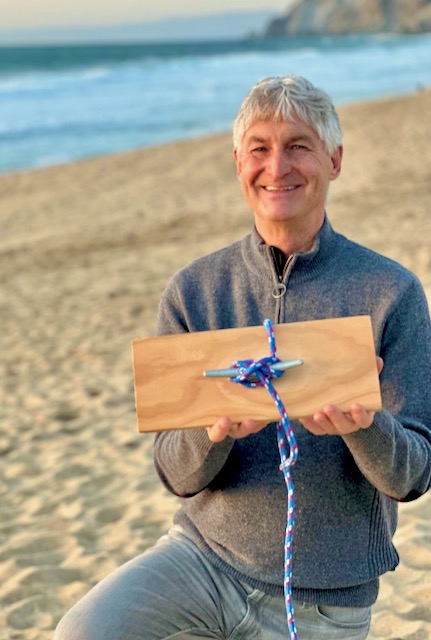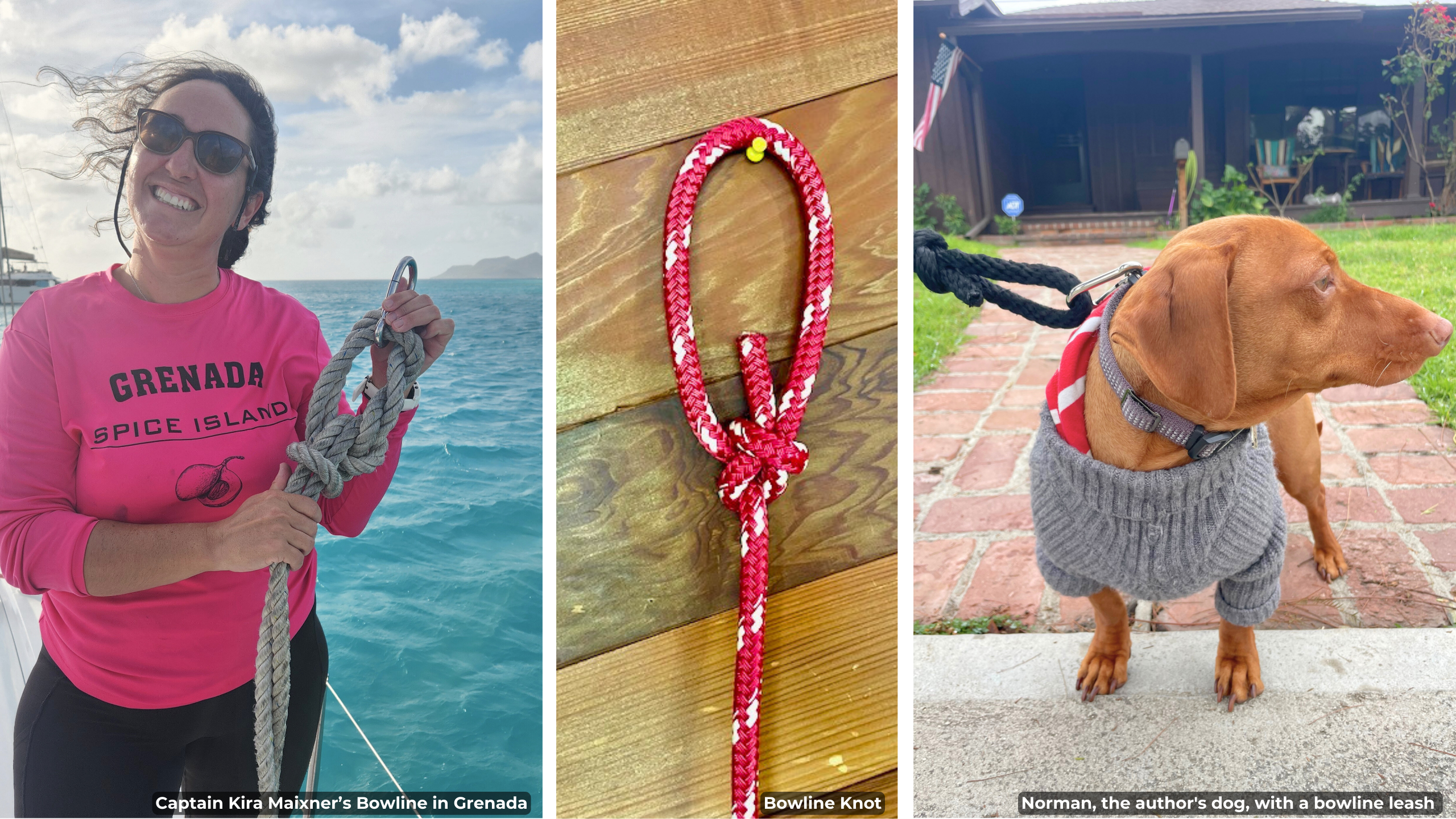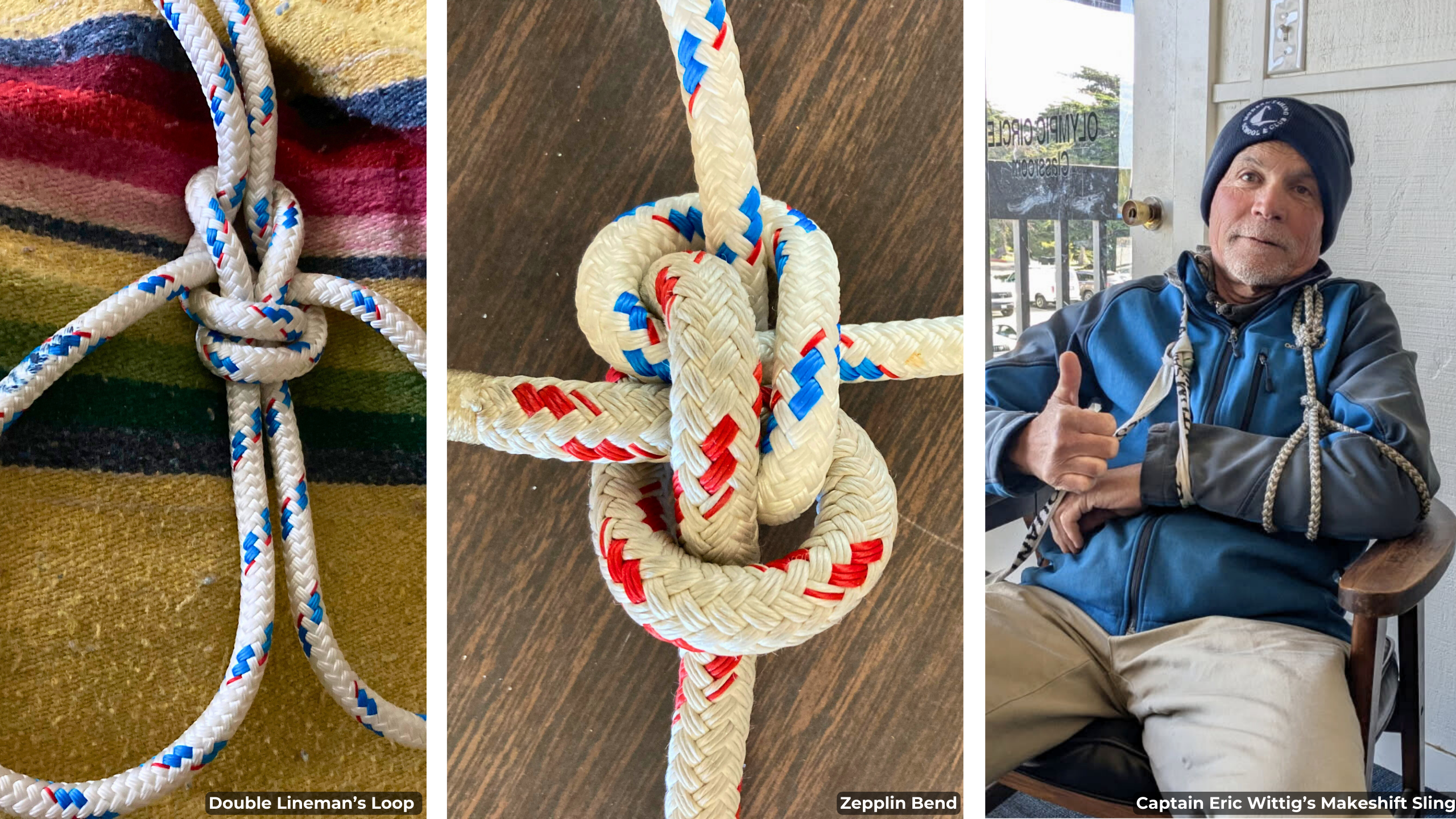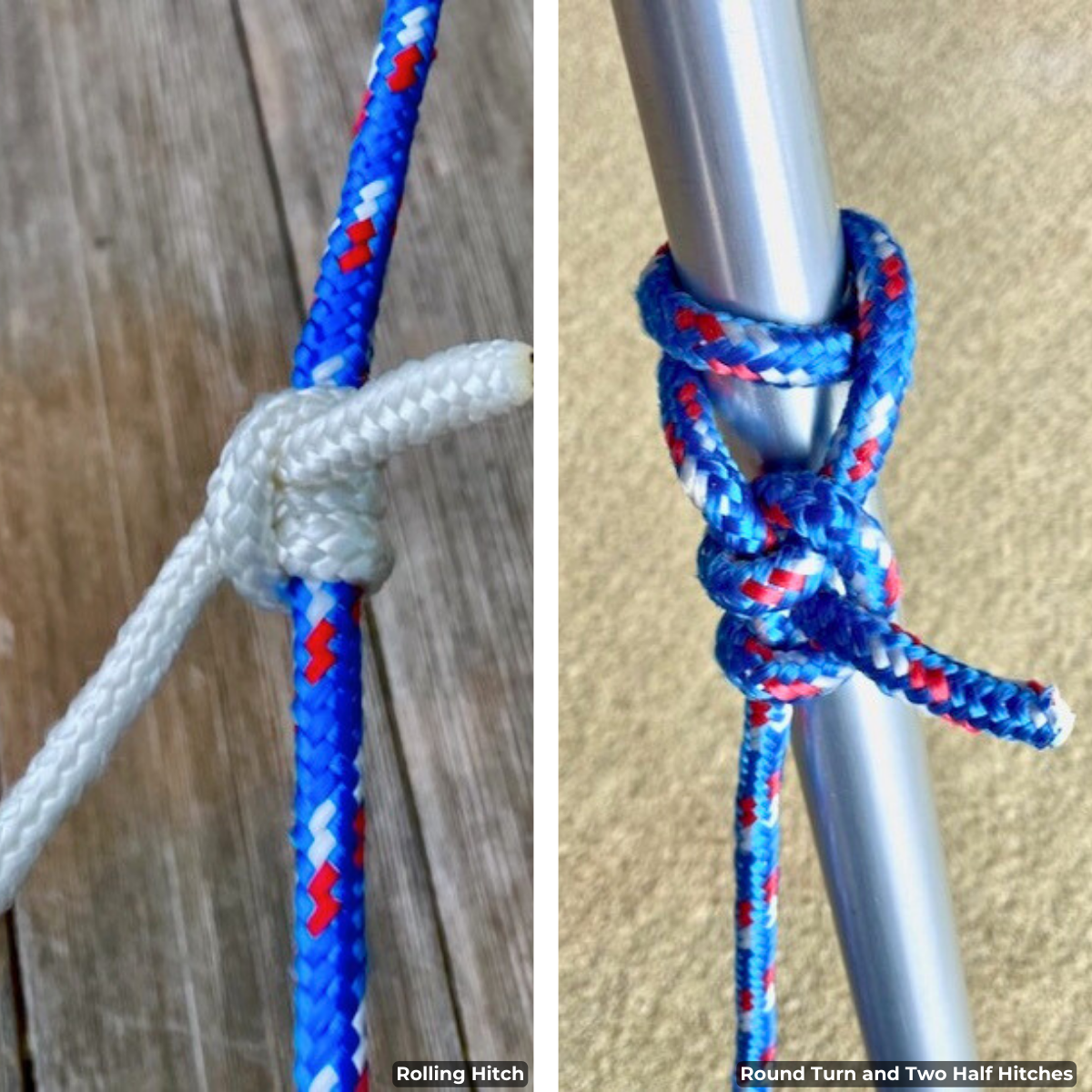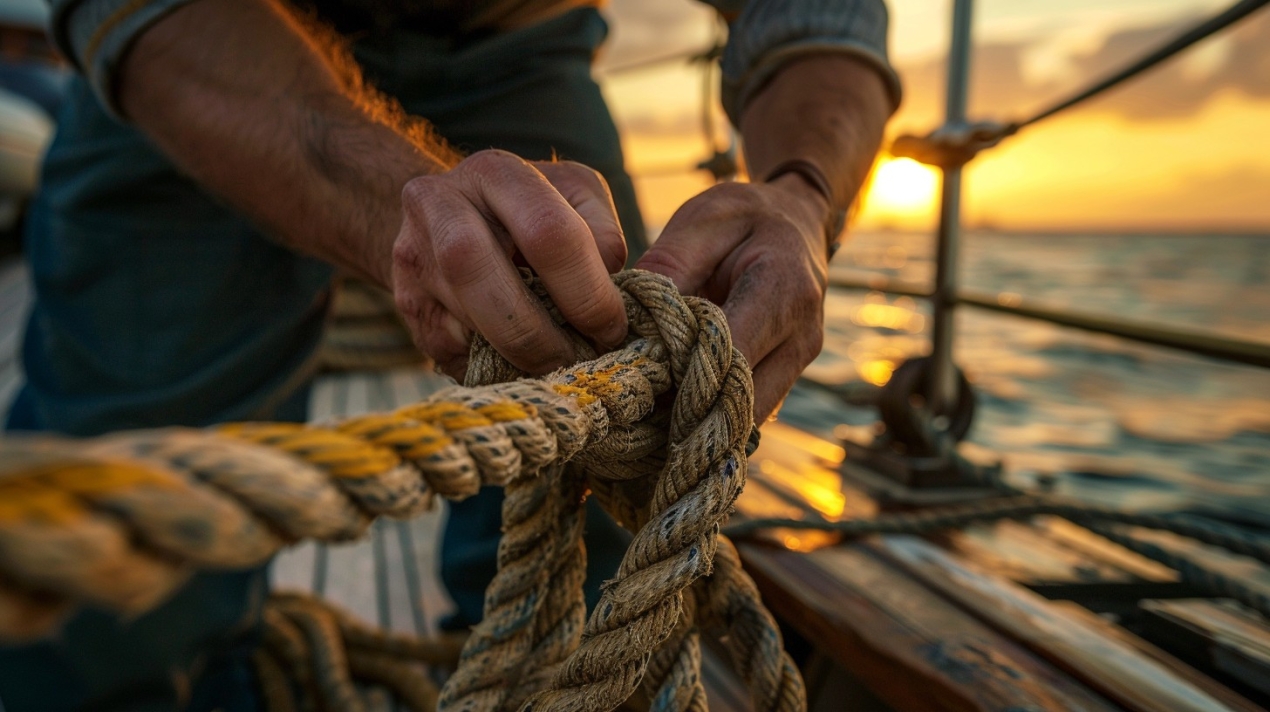
Knots are an essential part of sailing, and mastering them is a crucial skill for any sailor. They allow us to secure lines, control sails, and ensure the safety of our vessels. A skill that has been passed down through generations of sailors, knot-tying is still as important today as it was centuries ago.
In this article, we will share some expert tips from our experienced Modern Sailing instructors on their love for the art of knot-tying. We will also discuss its importance in sailing and provide some helpful resources for further learning.
The Cleat Hitch
Dave Russell champions the Cleat Hitch. "Knowing how to tie it quickly in different positions comes from practice until the knot is executed by muscle memory. Such skill is efficient and valuable: Knots can save your life. A properly tied cleat hitch can be a tell-tale sign that a sailor can be trusted to handle the lines on a boat. Docking becomes so much more efficient when a crew member can secure one line from the boat to the dock then quickly move on and secure another part of the boat. Done poorly, the crew on the dock fiddle with the knot, become frustrated with every mis-tied attempt, and the boat may impact something under adverse wind or current directions.”
Andrea Geisinger adds, "At Modern Sailing we teach the “2 roads under a bridge” or “C-8-T” version. You can apply this to docking lines, furling lines, or outhaul - any line you want to attach to a cleat." Dave goes on to describe the method, "Done properly, a cleat hitch is elegant and strong, resembling a bridge over railroad tracks. The first turn on a cleat hitch should be made so that the first part of the cleat that the line touches is at the far end, meaning the end with the horn that is pointing away from the object that the standing part of the line is attached to (mooring ball, dock, etc)."
The Bowline, and the Bowline on a Bight
Kira Maixner highlights the versatility of the Bowline on a Bight. "It's your friend in a pinch," she declared, "essential for extra security on mooring balls or when providing a tow. It's a knot that demands respect, but rewards mastery with increased confidence on the water." She also encourages everyone to "practice, practice, practice for when the time for an emergency bowline comes - you're ready!"
“The Bowline is a very strong knot,” Andrea Geisinger agrees. “If you need a loop in a line or to attach jib sheets to the clew; for added fun learn to tie a bowline with one hand only. It comes in handy when you’re in the water and want to tie a line around you.”
Tyler Cobbett adds that the bowline is his "favorite knot because it’s the most versatile knot. It can be used in so many ways - to create a loop at the end of a dock line, to create a makeshift leash when tied around a dog’s collar, or to lift suitcases up into our attic tied around the suitcase handle."
The Zeppelin Bend & Double Line's Loop
Eric Wittig, known for his innovative approach, advocates for the Zeppelin Bend and the Double Line's Loop. "The Zeppelin Bend is my preferred bend," he shared, "and the double lineman’s loop makes a great ad hoc bosun’s chair." He also offers "a creative improvisation that worked better than the sling Kaiser gave me for my separated shoulder! It comprises a bowline, a modified French bowline (with 3 loops rather than 2) and a rolling hitch."
The Round Turn and Two Half Hitches
Irina Walker stresses the importance of properly securing fenders. "I live near a marina," she explains, "and I find so many loose fenders on my hikes! My friends and family know they can always count on me for spares. It just goes to show how many people aren't tying a proper Round Turn and Two Half Hitches when they deploy their fenders."
Dave Russell adds that the Round Turn and Two Half Hitches "is perhaps the best knot for tying fenders to lifelines or stanchions. I prefer it over a Clove Hitch, because after putting a round turn or two around the stationary object, the fender can then be put overboard and its height above the water adjusted simply by easing or pulling the bitter end. There’s usually enough friction in the round turns to keep the fender from slipping, enabling both of your hands to be free to adjust the line and tie it. Unlike a bowline, the loop in a round turn and two half hitches will cinch up on whatever it is tied to."
The Rolling Hitch
Dave Russell explains that the Rolling Hitch is "most often used to attach a snubber line to an anchor rode (chain or rope), and for easing an override on a jib sheet winch. It is essentially a clove hitch with an extra turn put ‘round the line or chain that needs snubbing. It’s holding is directional, as it can be easily slid one-way along the line it is snubbing, but will seize when pulled in the opposite direction."
The Sheepshank (?!)
Cliff Fitzgerald spoke of the Sheepshank, a relic from a bygone era. "When I was a kid my parents enrolled me in a sailing school which I participated in from age 8 through my teens. We learned — and had to proficiently demonstrate — all the standard knots that we teach in our ASA courses. Plus the “Sheepshank.” The Sheepshank? Here’s the thing: I have never had to — nor in 60 years have I ever witnessed anyone else having to — use the Sheepshank. Wikipedia tells us: “A shank is a type of knot that is used to shorten a rope or take up slack. The sheepshank knot is not stable. It will fall apart under too much load or too little load.” Ok, a knot not highly recommended, and for an application I have never had call to use.
But the Sheepshank is a bit of fun to tie, and to imagine how at one time — maybe in the age of great ships — it could have come into regular use."
What (K)not to Do:
The shared vexation among our captains was a mis-tied Cleat Hitch. It's a tell-tale sign if you can trust your skipper or crew. Steve Kent adds his Sailing knot peeve. People who tie sail ties around the main using half hitches. "A slip knot holds fine and is easily undone with one hand."
Pro Tips & Helpful Resources:
- Don't underestimate how essential fundamental knots are for any sailor.
- Practice is key to developing knot-tying proficiency.
- Knot-tying is a valuable skill with a rich history.
- Modern Sailing offers expert instruction from experienced instructors.
- Learn more about sailing lessons and charter opportunities at Modern Sailing.
- ASA offers an inexpensive knot tying kit complete with a small cleat, a few lengths of rope and several instructions cards.
- ASA - How to Tie 3 Important Sailing Knots
- A great resource to learn how to tie knots: AnimatedKnots.Com
Want to learn more about knot-tying and other essential sailing skills? Enroll in our ASA 101 Basic Keelboat Sailing on a Cruising Boat or ASA 101 Basic Keelboat Sailing on a Sportboat course. In addition to knot-typing, this comprehensive course covers basic sailing terminology, sailboat parts and functions, helm commands, basic sail trim, points of sail, seamanship, and safety, including basic navigation rules to avoid collisions and hazards.
